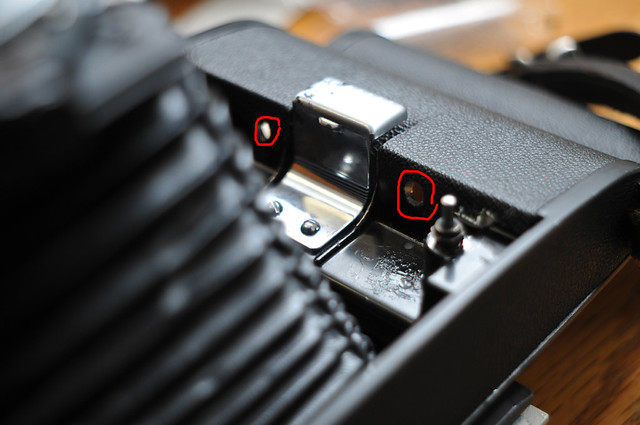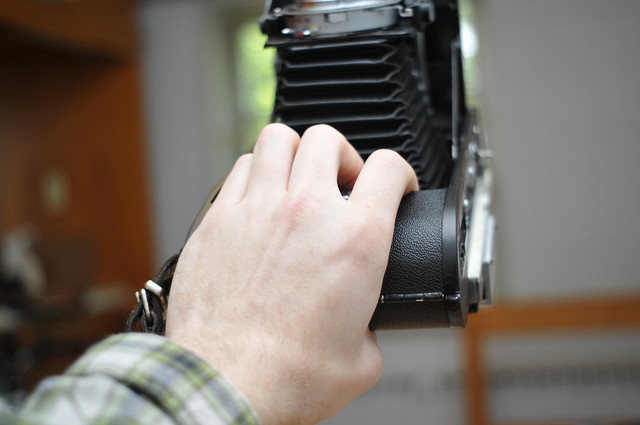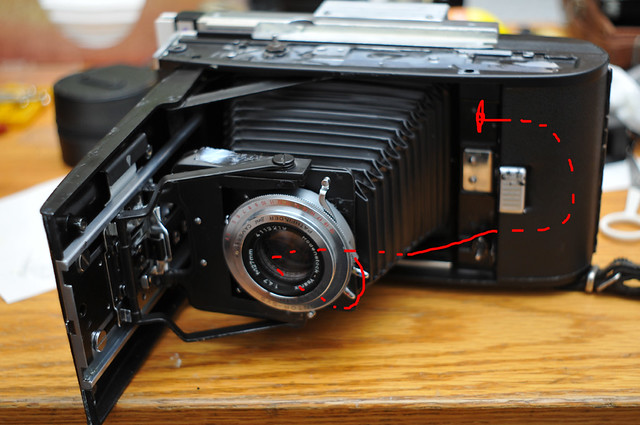Okay, I've been called out.
First, you should describe how you will use the camera. How will you hold it, and with what finger will you release the shutter. That will dictate where the control should go.
A constraint is where the release is on the shutter itself.
Then, you should define what you expect to do to connect those two points in actual use. Do you expect that connection to remain in place when the camera is folded, and as it is unfolded? Are you expecting to have to attach a control somewhere as part of the unfolding process? This concept of use will impose requirements. A control that has to remain attached during folding and while folded will have to be routed such that it does not interfere with the folding process, and such that the folding does not damage it. Once you understand those requirements, you can lay out a path that fulfills them. That path will dictate the required radii, and the smallest of those radii will dictate the minimum radius requirement for the control mechanism.
You may also have aesthetic requirements, and you know what you expect in terms of the force and smoothness required to a actuate the button.
And there are requirements on the vibration imparted by the mechanism.
Once you know the requirements, you'll know how to evaluate what's out there very specifically.
For example, if you need a push mechanism, a cable release will need tensile stiffness. The braided cable releases provide that. If you need a push mechanism, those won't work, but the spiral-wound releases might. The spiral-wound releases also bind less when bent in a small radius in my opinion. But the more bends, the more friction, and the more friction, the more the camera is likely to move during actuation, especially if that friction is jerky. Vibration may also be an issue with a solenoid, which provides linear motion very suddenly and is thus difficult to implement without vibration, especially with a lightweight camera. A motor with an eccentric cam to actuate the shutter on the lens would be far smoother, but the trick is to find a motor that makes one revolution only per actuation.
I actually took a look at McMaster-Carr, which is an online industrial supply catalog (www.mcmaster.com) but didn't find anything small enough for this purpose. I didn't look very hard. If you go there, search on "control cables". You'll need something fairly tiny to fulfill what I'm guessing are your requirements.
The cable and actuator mechanism for the body release on a Graflex is already designed to fulfill most of those requirements, and I would see if one could be adapted for this purpose. You might have to compromise the requirement on where you put the release.
Rick "whose experience suggests that half of all design efforts should be spent properly understanding the problem" Denney



 Reply With Quote
Reply With Quote





 , I'd seriously go the electric solenoid route rather than mechanical.
, I'd seriously go the electric solenoid route rather than mechanical.
Bookmarks